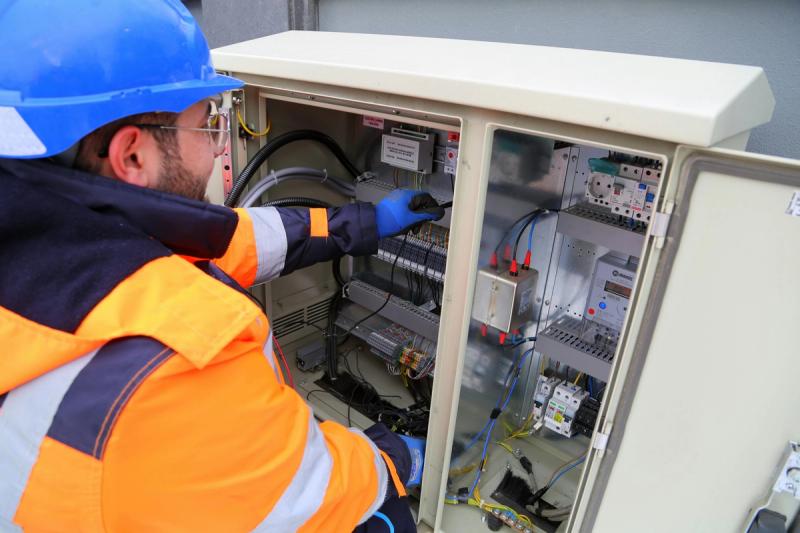
Smart Power Management: A Contractor’s Guide to Smarter Energy Use Every jobsite needs power—but how you manage that power can be the difference between running efficiently or running up costs.
Smart power management is an automated system that delivers only the energy your site actually needs. Instead of running generators all day even during low-demand periods these systems adjust output in real time, helping contractors cut fuel use, reduce emissions, and stay focused on the work at hand.
What Is Smart Power Management?
At its core, smart power management monitors your energy use and automatically scales power output to match demand. If your load drops, it dials back. If you need more power, it ramps up instantly.
Key Objectives:
- Eliminate fuel waste
- Extend equipment lifespan
- Balance multiple power sources (generator, battery, solar)
- Reduce refueling downtime and maintenance
Core Features of Smart Systems
Load Detection & Balancing
Continuously monitors energy draw and adjusts output accordingly no overproduction, no fuel burn during idle times.
Source Optimization
Selects the most efficient source based on demand. Low loads? Use battery. Peak loads? Engage the generator. Solar available? Tap in seamlessly.
Remote Monitoring & Alerts
Stay in control with real-time system data, fuel levels, load insights, and maintenance notifications all accessible from your phone or laptop.
Why It Matters for Contractors
Fuel Savings
Traditional generators burn fuel at a fixed rate even when power demand is low. Smart systems avoid this by scaling output and prioritizing battery use. The result: up to 90% fuel savings on some sites.
Reliable, Consistent Power
Avoid brownouts, voltage drops, and power interruptions. Smart systems maintain stable power delivery even as demand shifts across project phases.
Lower Emissions & Easier Compliance
Cut generator runtime, reduce emissions, and stay ahead of tightening environmental regulations helping you qualify for more bids and avoid fines.
How It Works on Real Jobsites
Smart systems bring intelligence to every watt of energy used. Here’s how they operate:
Dynamic Load Balancing
Power use varies across tools, trailers, and machines. Smart systems read real-time demand and:
- Pull from batteries during light use
- Kick on the generator only when needed
- Automatically transition between power sources
- Maximize every drop of fuel and amp of battery
Real-Time Control
Get live visibility and system control from any device:
- Monitor performance
- Adjust output
- Catch issues early and avoid downtime
Hybrid Generator Integration
Smart power management is a core component of hybrid generator systems like the P-Grid.
Battery-First Operation
- Powers light loads using battery
- Generator runs only for high loads or to recharge battery
- Reduces runtime, emissions, and fuel use
Modular & Scalable
As project needs grow:
- Add battery capacity
- Connect solar panels
- Expand to power multiple zones—without overhauling your system
Contractor Case Study
One contractor used a smart hybrid system on a 4-week infrastructure build:
- 60% reduction in fuel use
- 100+ fewer generator hours
- $3,500+ saved on fuel and maintenance
That’s not theoretical. That’s measurable ROI.
Smarter Power = Smarter Projects
Smart power management helps you:
- Lower fuel and maintenance costs
- Extend equipment lifespan
- Stay compliant with noise and emission standards
- Keep crews productive and projects on schedule
It’s more than tech it’s a smarter way to power your business.
Want to see what smart power could look like on your site?
Contact Select Energy today to explore solutions designed for your job’s real-world demands.




